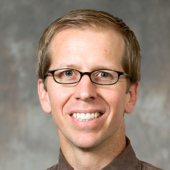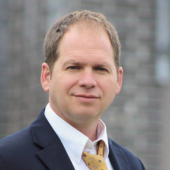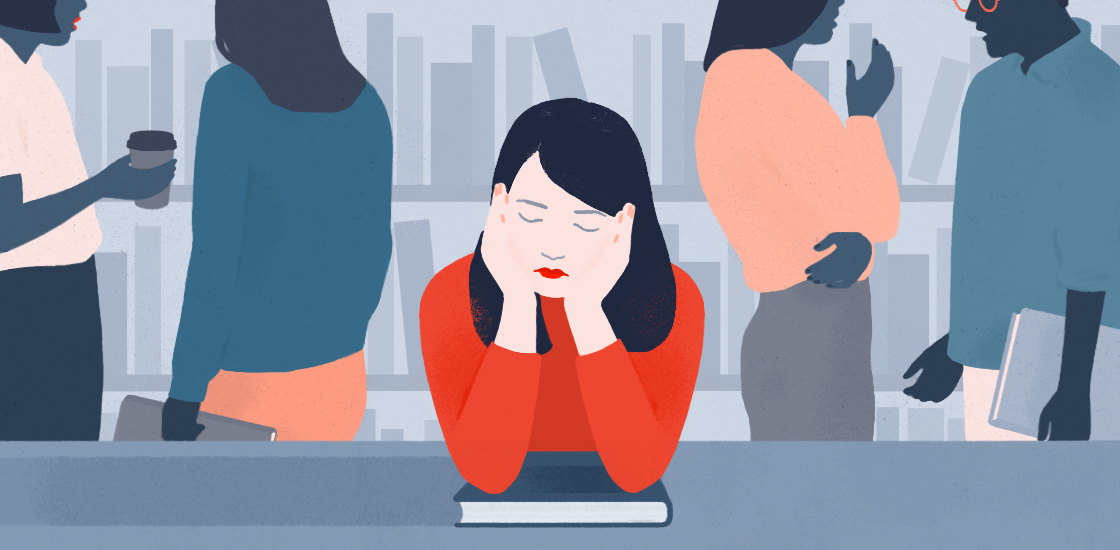THIS ARTICLE IS MORE THAN FIVE YEARS OLD
This article is more than five years old. Autism research — and science in general — is constantly evolving, so older articles may contain information or theories that have been reevaluated since their original publication date.


Listen to this story:
For a time, Nikki Lower had all the help she needed. Although she often felt she “didn’t quite fit in” during high school, she worked hard and excelled academically. After graduation, Lower did some volunteer work, but the stress of that work, and some social difficulties, led her to a therapist, who diagnosed her with depression and anxiety. The therapist also saw signs of attention deficit hyperactivity disorder.
When Lower gained admission to Brigham Young University in Provo, Utah, the university made accommodations, such as reserved seating in classes, audio texts and an electronic notebook for taking notes. For a few semesters, Lower did well. But as her classes became more difficult, she struggled with time management, motivation and severe anxiety — and her grades dropped.
She also noticed that her roommates were much better at making friends than she was, and she felt left out. She wondered if there might be another explanation for her difficulties. After an evaluation, we diagnosed her with autism. Lower began attending group therapy sessions for students with autism — and finally began to feel confident that she could succeed at the university.
More than 44 percent of students with autism receive some type of postsecondary education in the United States; people with autism make up 1 to 2 percent of students in universities. This number includes many cognitively able students, such as Lower, who find it difficult to adapt to university life because of social, emotional and organizational challenges1.
As a result, the graduation rate of students with autism or another disability in the U.S. is 41 percent, compared with 59 percent among the general population. An understanding of the needs of students with autism, along with support for their difficulties, can go a long way toward helping them succeed in institutions of higher education2.
Classroom concerns:
Expert panels have identified mental health as a top priority for helping adults with autism. In an ongoing survey by researchers at Durham University in the United Kingdom, university students with autism report that mental health concerns and social isolation are the biggest challenges they face. Both issues are also risk factors for suicide, which is all too common among students with autism3.
Like Lower, many adults with autism struggle with the organizational and planning skills that fall under the umbrella of ‘executive function.’ These struggles become more problematic when young adults begin living apart from their parents, and need to adapt to classes with less structure than in high school. The sights and sounds of university dining halls, parties in the dormitories and crowded campuses can overstimulate and overwhelm them. Those who have sensory difficulties may struggle to study or socialize in these environments.
In large institutions, these problems can easily be missed by everyone, including the parents of these students.
Fortunately, solutions are at hand. In August, we published an analysis of two decades of client records from the Counseling and Psychological Services Center at Brigham Young University4. Among those records are questionnaires that students filled out before and after therapy.
The center follows standard evidence-based counseling approaches but has no unique protocol for students with autism. The records suggest that before treatment, students with and without autism show comparable levels of psychological distress. They also report a similar degree of improvement after treatment.
But to achieve those gains, those in the autism group take about twice as long, including significantly more therapy sessions, than do their peers without autism. So students with autism can benefit from standard counseling, but may require more of it.
On social media, adults with autism responded to the results of this study in force. Many of them said standard psychotherapy does not adequately meet the needs of people on the spectrum. In some cases, they said, it is simply too short to be effective. One woman from the U.K. tweeted that she was given a maximum of six sessions of traditional cognitive behavioral therapy from a provider who had no training in autism; the therapy did not help her.
@CarolPoveyNAS Relationships over time are key. 6 sessions of CBT is not a relationship #SIASummit
— Abigail Thompson (@AbiElizabeth15) May 26, 2017
Researchers led by Jacqueline Rodgers at Newcastle University in the U.K. are adapting a treatment called ‘CUES’ for anxiety in autism for an adult population5. This and other adapted approaches are likely to be even more helpful than existing services for college students with autism.
Safe spaces:
Many higher-education providers offer support networks intended for people with autism, such as the therapy group that Lower attended. There are also a growing number of programs that help young adults with the condition transition from high school to vocational training or a university.
For example, Utah Valley University, Utah’s largest higher-education institution, received a grant from a donor to jumpstart the Passages program for students with autism. This program includes weekly skill-building meetings, recreational and social activities ranging from hikes to a “Star Wars” movie night, and regular workshops for families.
Universities can also adapt existing services to meet the needs of adults with autism. For instance, many institutions already provide aides for students with learning challenges. Some of these aides could be trained to be executive-function coaches. Student mentors also can provide excellent support for adults on the spectrum.
It may be possible to create safe spaces — areas with minimal sensory stimulation — for taking exams and other activities. And our data suggest that extending treatment limits for people with autism can lead to substantial improvements in well-being while decreasing costs associated with student failure.
Generating the institutional willpower to improve support for students on the spectrum requires advocacy, creativity and flexibility. Administrators and others should take the time to learn about autism and push for change. Autism is not rare; every college has many students with autism who can succeed with a little help.
Jonathan Cox is associate clinical professor of counseling and psychological services at Brigham Young University. Mikle South is associate professor of psychology and neuroscience at the university.

By joining the discussion, you agree to our privacy policy.